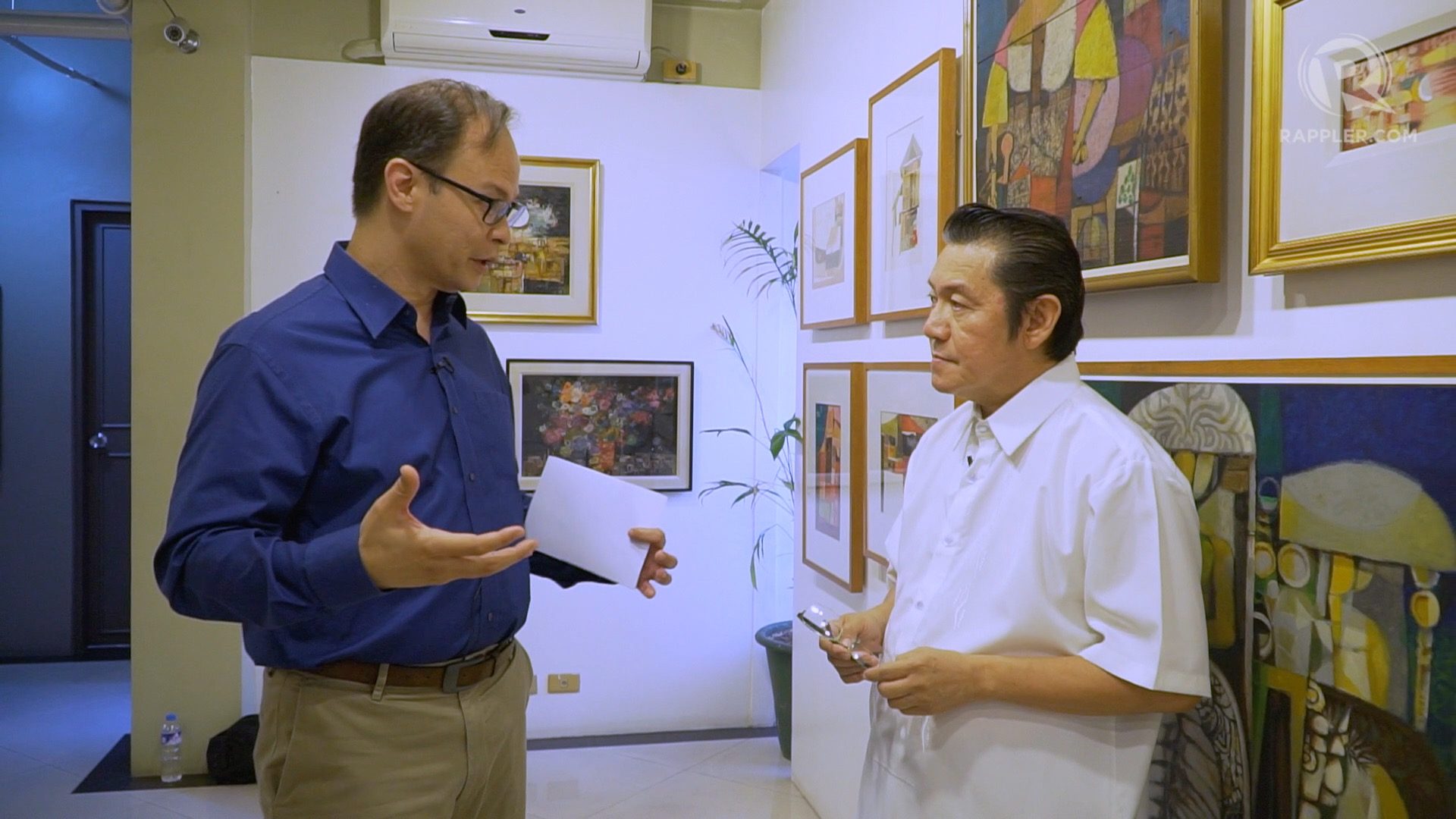SUMMARY
This is AI generated summarization, which may have errors. For context, always refer to the full article.

MANILA, Philippines – I never met Malang, the well-loved painter who passed away on June 10. While I appreciate his art – the barong-barongs especially – I’m no expert. So I shouldn’t say much about the art he left us – aside from what many have observed, that is is very bright and colorful and, to use an even less technical term, happy.
A few days after he passed away, we realized he would be a good subject for “What’s The Big Idea?” though we would need a quick turnaround because at that point we didn’t know the family and didn’t know much about him either. (WATCH: What’s the big idea? Malang: Look on the bright side)
Not being an expert, I devoured what books and articles I could find, by Cid Reyes, Manuel Duldulao, Juan Gatbonton, Ana Labrador and others. That’s less daunting than it may sound because, being art books, most pages are pictures, which can give as much if not more pleasure in less time. For cost considerations I am sure, many of the pictures are in black and white. But Cid Reyes, his art critic friend, is right: even if his paintings were in black and white, they’d still be colorful.
We spoke to Cid and to two of Malang’s 4 children, Soler Santos and Sara Santos, in the “Malang Room” of their West Gallery building in Quezon City. The 3 of them talked about expanding the room, and producing one more book and one more exhibit. About making a public call to owners of any Malang works to have these documented in preparation for that book and show.
I’d never been to a Malang exhibit so it was privilege to spend the afternoon in the private gallery. The pictures in the books and Google did not prepare me for the kaleidoscope.
The color and light came from what Malang believed was his charmed life. “Can I help it if I had a happy childhood?” is one of his most repeated quotes. He also said he didn’t do angst, joking that he was leaving that to Ang Kiukok. He said even when he tried, he couldn’t paint sad and dreary barong-barongs. He didn’t keep trying. He said he painted what he saw, what he felt and what he liked. Even if a vast number of his works were bright barong-barongs and happy women vendors, again and again. As it turns out, many liked that too.
What training and structure he got, he got from being a newspaper cartoonist. It helped that H.R. Ocampo was also at the Chronicle and urged him to take his artistry to another plane. He painted small because he said there wasn’t room for bigger works in the office. When he had his first exhibit at the Philippine Art Gallery in 1962, those “miniatures” were sold out. He was a belated but overnight success, said P.A.G. founder Lyn Arguila. With characteristic humility he said he was so belated because he needed more than a decade to learn what he could have learned in four years at UP.
He made no apologies and didn’t let criticism bug or change him. He would more likely make a joke, usually at his own expense. He found what he loved and mastered it. More often than not producing more paintings of barong-barongs and women vendors with church spires behind them. One critic said Malang may have reached a “dead end,” and this was in the 1970s. He continued seeing and sharing a brighter world.
One section of the gallery houses part of Malang’s collection of the works of his friends and contemporaries: H.R. Ocampo, Botong Francisco, a Joya, two Ang Kiukoks and more. And one can take them in while sitting on an Abueva bench. The biggest piece is an unfinished Manansala that Mang Enteng wrote a personal dedication on: To Malang. Ito ang ibig niya. Hindi tapos. From Enteng.
Malang lasted 3 months in UP and a few months in the Roces newspaper chain before jumping to the Manila Chronicle. If he did that today, people would say it was so millennial. Then, it could have been a case of his life imitating his art, at least how he described his art: ad-lib and jazz. He said he never really knew when a painting was finished. And, as with other masters, his passing is just a brushstroke in a colorful canvas. – Rappler.com
Coco Alcuaz is a former Bloomberg News bureau chief and ANC business news head and anchor.
Add a comment
How does this make you feel?
There are no comments yet. Add your comment to start the conversation.